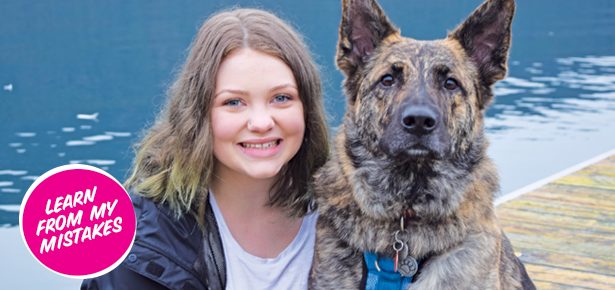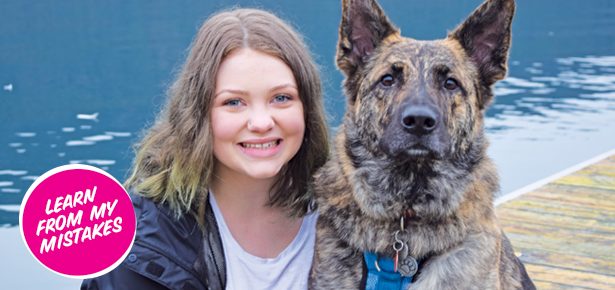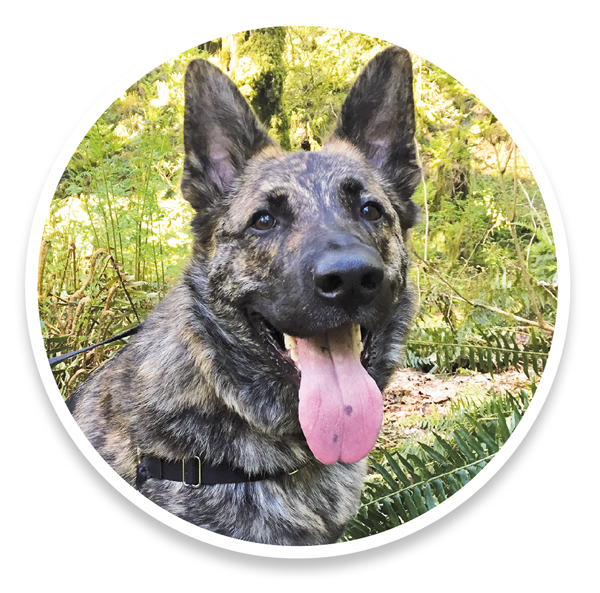

Rescue Rules
Are you dealing with a Risky Rescue or a Reputable Non-Profit? How to make sure you’re adopting from a great rescue group
Dogs are pretty much a part of my identity. My love for all things dog is definitely worn on my sleeve—a paw print tattoo prominently decorates my wrist, and my birthday presents each year, without fail, consist of dog paraphernalia. I’ve been training and working with animals all my life, have a certificate in Animal Welfare, and consider myself an educated, conscientious, and responsible animal lover. So, when I was finally ready to accept a dog into my life after the loss of our family’s Jack Russell Terrier, I was thrilled to be able to go through the rescue system. Adopt, don’t shop is something I believe strongly in. My family and I knew our needs and what we were looking for, so I began to browse private rescues as well as shelters, hoping for the moment when I first saw my “soulpup.” A few times, I was close to the “meet and greet” point of the process when the scheduled rendezvous would fall through or someone else would beat me to the final steps.
After these failed attempts, I was especially keen when one rescue sent me information on a new puppy—a beautiful 10-month-old German/Dutch Shepherd cross—just surrendered by his family. A handsome brindle baby, he immediately melted my heart and I just knew we would be a good fit. Within two days, I had scheduled a meet up at the dog daycare where his foster mom had left him for the day. He was slightly unfocused and overwhelmed but seemed sweet and playful, and just like that I fell in love. Another two days later, we had a home visit scheduled with one of the rescue’s principles. He entered, took a cursory look around and then sat to tell us the adoption fee could be sent to him via e-transfer to his cell phone and we could pick up the dog that evening. As we scrambled to get organized—we never thought we’d get a dog that quickly—I had an uneasy feeling in my gut: This was all happening really fast. But the sheer excitement and happiness of finally getting a dog to call my own was overpowering and, before I knew it, we had transferred the large adoption fee and signed on the dotted line.

Here are some things to look out for when trying to determine if a rescue is reputable or risky:
1. They don’t ask questions. Any legitimate rescue vets potential adopters and will take care to make sure the right questions are being asked. Steer clear of rescues that don’t seem too interested in your history, lifestyle, or pet experience. They should want to know where the dog will be spending his time, how often he will be left alone, who the primary caretaker is, and the resources and finances in place to care for the dog.
2.Their home visit is just that… a visit. When I had my home visit, the rescue representative barely looked around then sat on our couch to wait for his money to be transferred. Any home visit worth its salt should be in-depth, and will consist of exploring the property the dog will be living on while taking the time to interview you in person. This is a key step in the process to evaluate you and your space, and determine if those match up with the dog. They should want to know if the yard is fenced, where the dog will sleep, where the dog will spend his time when you’re at work, your dog training philosophy, and a host of other questions along these lines.
3. Their reputation precedes them…and not in a good way. In this day and age, the internet and social media means we all wield considerable critical and investigative power. We check our restaurants, clothing shops, grocery stores, even doctors on the web… why not animal rescues? Utilize Facebook, Yelp, Google—even reach out to people you can find online that have adopted through that rescue in order to get feedback. Keep in mind there are always some disgruntled folks out there—perhaps rejected applicants—but if the majority of the response is negative, there may be some weight to it.
4. The rescue-to-adoption process is really quick. Rescues usually foster their rescue dogs for a while before putting them up for adoption in order to allow time to assess the dog’s health, have any necessary vet work done, and get an in-depth sense of the dog’s personality, triggers, and what type of home would best suit them. If the rescue says they just got this dog in yesterday and they’re already ready to adopt him out, ask more questions.
5. They can’t or won’t answer easy questions. In some scenarios, such as if the dog was stray or surrendered with no back-story, the rescuers won’t have all the information. However, there are some general things that should always be provided for you if they have it: information on the dog’s past; medical records (if they don’t have past records, they should at least provide the records that the rescue itself has done a check-up, neuter/spay and microchipping pre-adoption) and any disclaimers they have for the dog (past violence/aggression, reason for surrender, etc.). These may or may not affect your decision, but you have a right to know before bringing the dog into your life. If the rescue won’t provide you with the simple things, that’s a red flag. And feel free to do your own research—some things relevant to the dog may be public record.
6. They get defensive when confronted/questioned. It’s never a good sign when someone immediately gets their hackles up when asked a question, especially if it’s not accusatory. If you’re asking pretty standard questions, and they’re responding like it’s the Spanish Inquisition, there may be more there.
7. There’s no follow-up. This is applicable after you’ve signed and officially adopted the dog, so there’s not a lot you can do about it at this point, but it’s very telling. Most reputable rescues will follow up to ensure all is well and to hopefully prevent re-surrenders. Many good rescue groups will also insist you return the dog if it doesn’t work out. I’ve had my dog in my home for over a year now and haven’t heard a peep from the rescue.
Adopting a dog is a lifelong commitment. You want to make sure you know what you’re getting health and temperament-wise. Do your own research on multiple rescues before you interact with them, as well as on average adoption fees for dogs in different life stages. (Keep in mind that the adoption costs of puppies help offset the medical expenses good rescues incur rescuing and rehabbing senior dogs or dogs with health issues). The rescue is allowed to interview you—don’t be scared to interview them back! Be prepared with a list of questions that are important to you about the group’s culture and the dog. Finally, be aware but don’t fall into a trap of distrusting everyone. Despite the occasional disreputable person or group, the overwhelming majority of people out there rescuing only have the wellbeing of animals at heart.
Join the newsletter and never miss out on dog content again!
"*" indicates required fields
By clicking the arrow, you agree to our web Terms of Use and Privacy & Cookie Policy. Easy unsubscribe links are provided in every email.